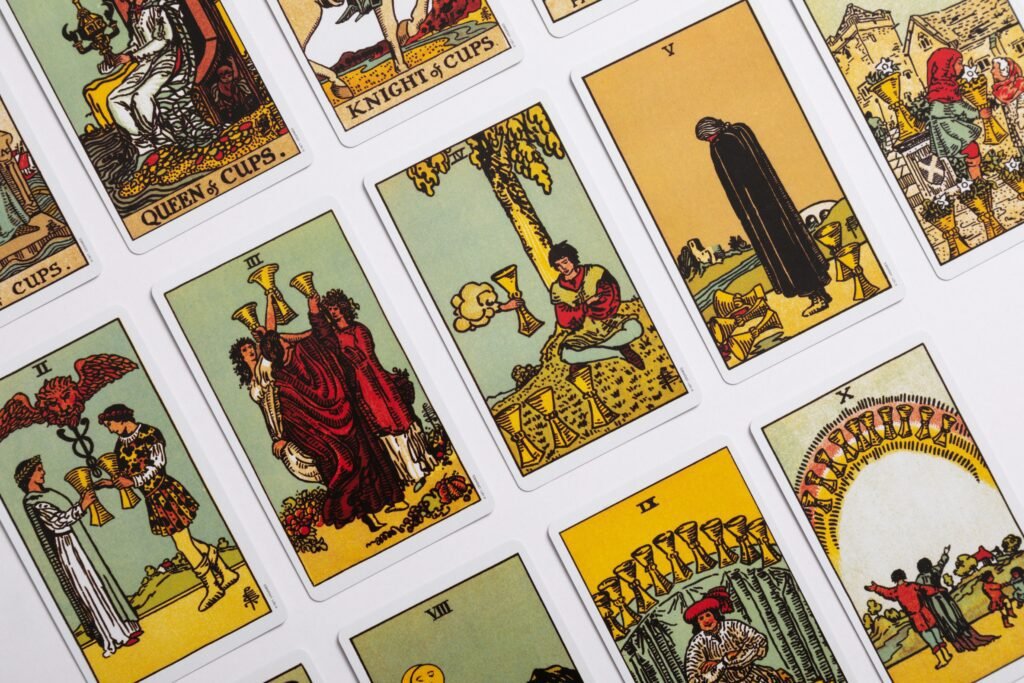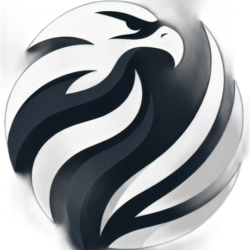
Introduction to the Tarot
The Tarot has long been an enigmatic and multifaceted subject, captivating the curiosity of people from various walks of life. Originating in the mid-15th century in Europe, Tarot cards were initially a popular parlor game known as “tarocchi” before evolving into a profound tool for divination and self-reflection. The history of the Tarot is a rich tapestry woven with influences from various cultures, including ancient Egyptian, Kabbalistic, and pagan traditions, which have all contributed to its modern interpretation.
A standard Tarot deck consists of 78 cards divided into two main parts: the Major Arcana and the Minor Arcana. The Major Arcana comprises 22 cards, each depicting a symbolic figure or scene that conveys a specific archetype or spiritual lesson. These cards often represent significant life events, spiritual experiences, or profound transformations. Examples include The Fool, The Magician, and The World, each carrying unique interpretations and implications during a reading.
In contrast, the Minor Arcana consists of 56 cards split into four suits: Wands, Cups, Swords, and Pentacles. These suits are akin to those found in traditional playing cards, each containing 14 cards, ranging from Ace to Ten, plus four Court cards (Page, Knight, Queen, and King). The Minor Arcana focuses on the day-to-day aspects of life, providing insights into relationships, tasks, challenges, and opportunities. This division allows the Tarot reader to offer a nuanced perspective that blends the mundane with the profound.
Various traditions and styles have emerged within the realm of Tarot, each offering unique symbolism and artistic expression. The Rider-Waite-Smith deck, created in the early 20th century, remains one of the most widely recognized and utilized decks today. Other notable traditions include the Thoth Tarot, known for its esoteric symbolism and vibrant artwork, and the Marseille Tarot, which emphasizes historical continuity and simplicity in its design.
Understanding the Tarot’s complex history and structure lays the foundation for a deeper exploration into its meanings and applications, serving as a gateway to the mysteries encoded within each card.
Interpreting Tarot Imagery and Symbolism
The Tarot deck is imbued with a rich visual language, each card laden with symbols, colors, and archetypal imagery that contribute to its interpretation. Understanding these elements is essential for anyone looking to unlock the mysteries of the Tarot. In particular, the Major Arcana cards are rich in symbolic content that provides insight into the deeper aspects of life and the human experience.
Each symbol within the Major Arcana holds significance. For example, The Fool card, often depicted with a figure standing at the edge of a cliff, symbolizes new beginnings and potential. The presence of a dog at The Fool’s feet represents loyalty and protection. Similarly, The Magician card showcases tools representing the four elements—wand, cup, sword, and pentacle—signifying the harnessing of natural forces to achieve goals. Colors, too, play a crucial role: the vibrant yellows in The Sun card symbolize vitality and enlightenment, while the blues in The High Priestess signify intuition and the subconscious.
Beyond the Major Arcana, the Minor Arcana and court cards contribute additional layers of meaning through their imagery. These cards focus more on day-to-day events and personal experiences. The Minor Arcana is divided into four suits—Wands, Cups, Swords, and Pentacles—each associated with different spheres of life. For instance, Wands often symbolize ambition and action, Cups relate to emotions and relationships, Swords to intellect and conflict, and Pentacles to material aspects and practical concerns. The presence of specific symbols, such as the overflowing cup in the Ace of Cups, signifies emotional abundance and new beginnings in relationships.
The court cards—Pages, Knights, Queens, and Kings—each depict various stages of personality development and specific character traits. A Queen of Swords, for example, embodies intellectual clarity and articulate communication, often depicted with a sword held upright symbolizing decisiveness and truth. These visual cues are not merely decorative; they play a critical role in understanding the messages conveyed by the cards.
Thus, the rich array of symbols, colors, and archetypal imagery across the Tarot deck provides a tapestry of meaning. By closely examining these visual elements, one can gain deeper insights into the readings and the profound messages they deliver.
When it comes to conducting Tarot readings, mastering techniques and spreads is essential for achieving clear and insightful outcomes. The preparatory steps are instrumental in ensuring both the reader and the environment are conducive to a focused reading. One must establish a calm and quiet space, free from distractions. Incorporating elements like candles, incense, or calming music can enhance the atmosphere. Centering oneself through a brief meditation or deep-breathing exercise can aid in achieving mental clarity and focus.
The choice of Tarot spread significantly influences the depth and nature of the reading. The Celtic Cross is one of the most popular and comprehensive spreads. It comprises ten cards, each representing different aspects of the querent’s question, including immediate concerns, hidden factors, and future influences. This spread is ideal for complex queries, offering a detailed exploration of various facets of the situation.
The Three-Card Spread, known for its simplicity and versatility, involves drawing three cards, each symbolizing the past, present, and future. This spread is particularly effective for gaining a broad perspective on a specific issue or for quick insights. It can also be adapted for other themes, such as mind-body-spirit or situation-action-outcome.
The One-Card Draw is the most straightforward spread, involving the selection of a single card. This method is best suited for daily guidance or when a concise, direct answer is needed. It’s a practical tool for those seeking quick clarity on a specific question or aspect of their life.
Formulating the right questions is pivotal to extracting meaningful insights from the Tarot. Questions should be open-ended rather than yes/no to allow for richer interpretations and guidance. For instance, instead of asking, “Will I get the job?”, one might ask, “What can I do to improve my chances of obtaining this job?” This approach encourages a more nuanced and actionable response from the cards.
Integrating Tarot into Everyday Life
Incorporating Tarot into your daily routine can be a transformative journey of personal growth and self-discovery. Keeping a Tarot journal is highly recommended for tracking your readings and progress. This practice allows you to document your questions, the cards drawn, and your interpretations, enabling you to observe patterns and improvements over time. A Tarot journal serves as a reflective tool, deepening your understanding and connection with the cards.
One effective way to connect with your Tarot deck on a daily basis is through the practice of daily draws. Selecting a card each morning can provide valuable insights and guidance for the day ahead. Over time, you will notice recurring themes and messages, aiding in your intuitive development. Beyond daily draws, incorporating meditative practices with your Tarot cards can further enhance your relationship with the deck. Spend a few moments in quiet contemplation with a selected card, allowing its imagery and symbolism to resonate deeply within you.
Beginners often face common challenges such as difficulty in interpretation or feeling disconnected from the cards. Addressing these issues involves patience and consistent practice. Engaging with a supportive community, whether online or in-person, can provide valuable insights and encouragement. Additionally, it is crucial to trust your intuition. Confidence in your intuitive abilities will grow as you continue to work with the Tarot, further enriching your practice.
To create a holistic approach to personal development, consider blending Tarot with other spiritual practices. Combining Tarot with tools such as crystals, meditation, or astrology can offer a multidimensional perspective on your journey. By integrating these diverse modalities, you can craft a well-rounded and enriched spiritual practice that supports every facet of your personal growth. Engaging with Tarot in this comprehensive manner can unlock deeper levels of self-awareness and insight, fostering a greater connection to your inner wisdom.
buy product
Discover more from detoatepentrutotisimaimult
Subscribe to get the latest posts sent to your email.
